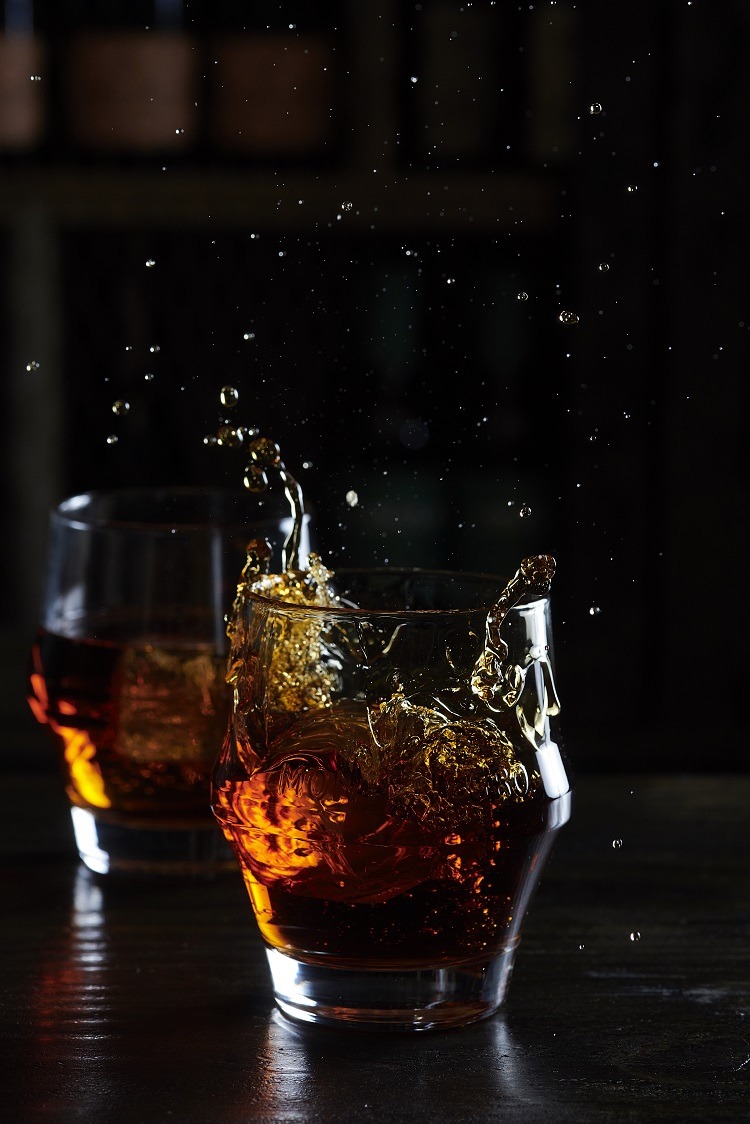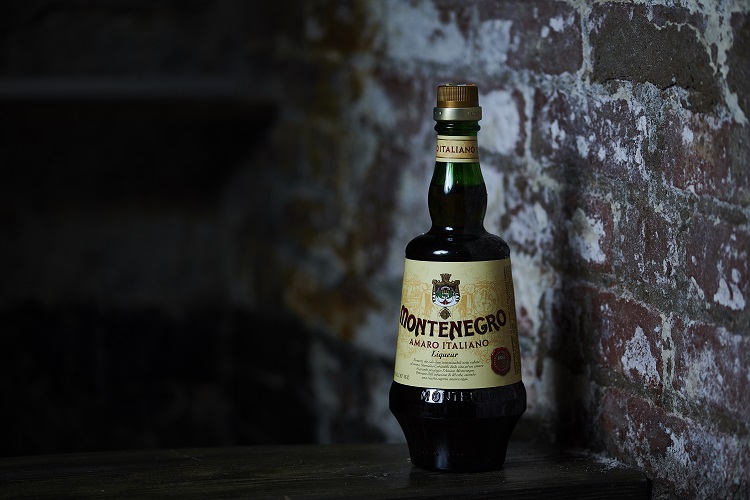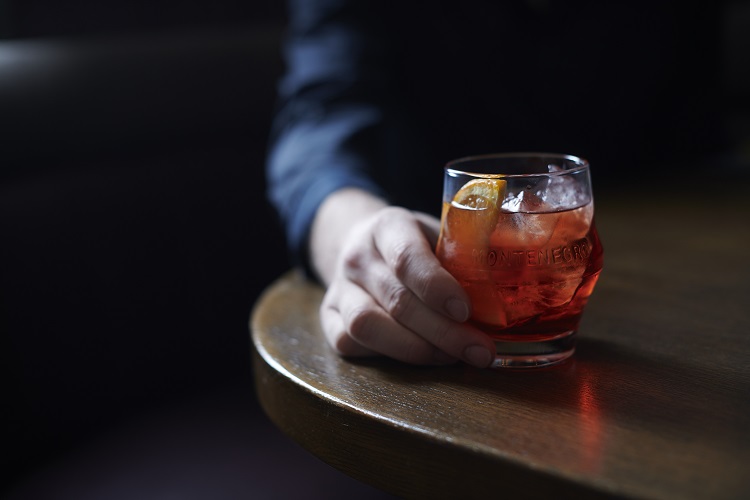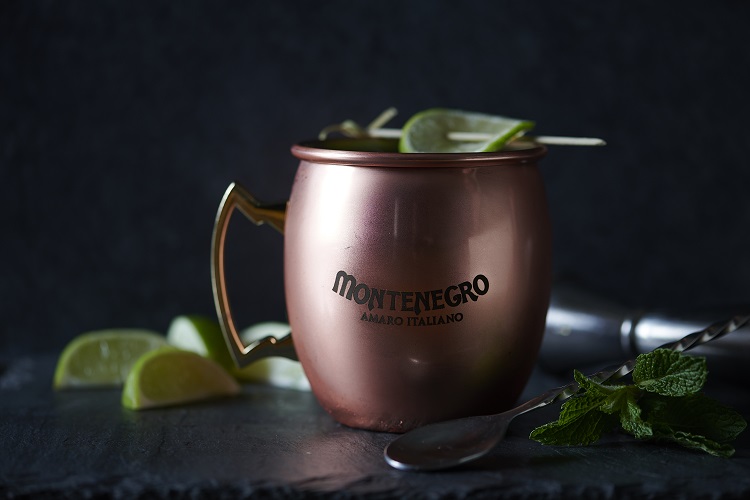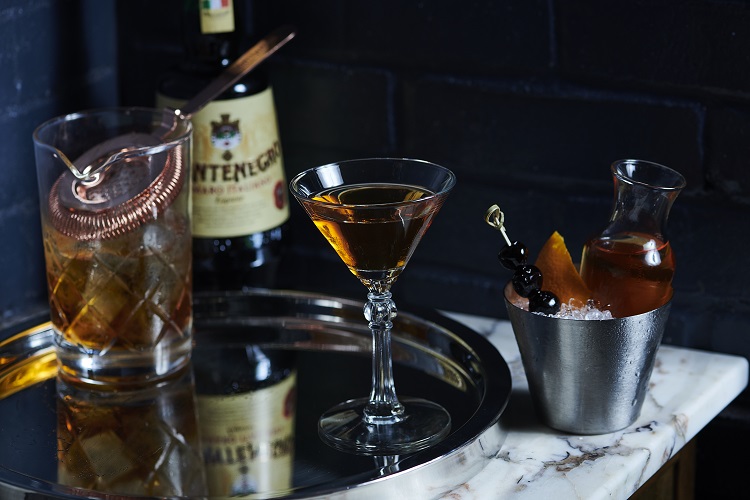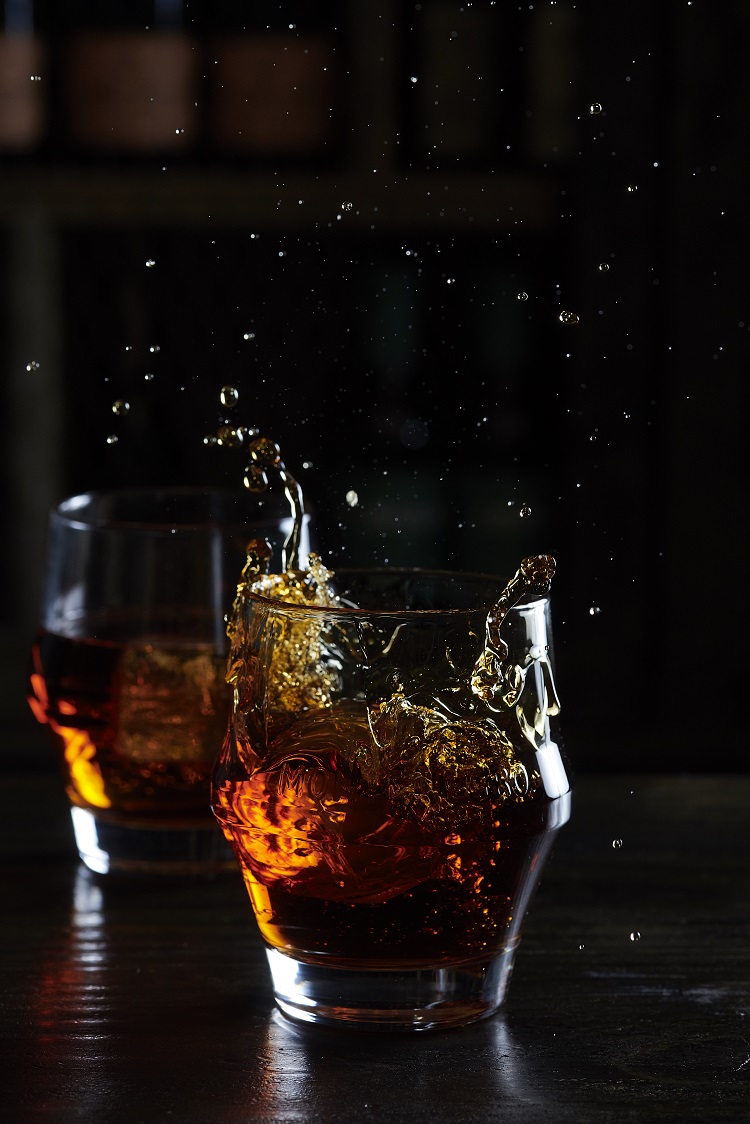What Is A Digestif?
In the U.S., dining experiences are typically short and to the point. We eat to eat, and then move on. In Italy, it's quite the opposite. Lunch and dinner are hourslong celebrations with a seemingly infinite number of courses — and with an aperitif and digestif as the bookends. The aperitif focuses on small bites like olives, nuts, and cheese with dry drinks such as Champagne, vermouth, or wine — all of which stimulate the appetite and supposedly make you hungrier.
The digestif is the nightcap following coffee or espresso. This includes brandy, fortified wines, distilled liquors, and liqueurs such as Drambuie, Grand Marnier, Jägermeister, Kahlua, and Fernet, which is classified as an amaro. This bittersweet herbal alcohol has a medicinal background and is known to help the stomach settle after eating large quantities of heavy food like bruschetta, risotto, tortellini, pizza, or ragù Bolognese.
"For centuries, monks and friars would use their knowledge of botany to create custom elixirs made from macerating local barks, seeds, plants, flowers, and other botanicals in alcohol," Brad Thomas Parsons, author of "Bitters and Amaro," told The Daily Meal. "These had various claims for better health but were typically consumed to stimulate the appetite or aid digestion through their use of natural bittering agents like cinchona, gentian, and wormwood."
Amaro was often sold by pharmacies long before it was embraced by consumers for commercial use. With that being said, you certainly won't find modern doctors prescribing it today.
"While there's no denying the enjoyment of a small glass of amaro after a rich meal, it's more of a nod to its rich history rather than prescriptive cure-all (for that, we have Advil, Tums, and Pepto-Bismol)," Parsons said. "Where and how you consume amaro is so much about the sense of place, and for me it's more about the hospitality and the ritual of lingering at the table after a good meal with a bottle of amaro among friends."
Although digestifs can be found at the back of dusty bar shelves in the U.S., they're customary in households and restaurants across Europe — especially in the Boot. One of the Italy's most prized labels is called Amaro Montenegro, which is thick and truly bittersweet. The Bologna-based brand was named "Best Bitter in the World" at the International Wine & Spirit Competition in 2017 and 2018.
Amaro Montenegro — also known as "Amaro Monte," perhaps to appeal to us millennials who've never heard of the spirit — contains 40 botanicals collected from all over the globe. Many of the ingredients are top-secret, but The Daily Meal made makers spill the beans on nine: nutmeg, cloves, cinnamon, artemisia, marjoram, oregano, coriander, petite dried oranges, and sweet and bitter oranges. (Full disclosure: Amaro Montenegro paid my way for a press trip to Italy, where I was able to familiarize myself with the signature brand.)
After these are boiled down, macerated, and distilled, makers are left with 12 different extracts that are then blended into six aromatic notes: bitter and herbaceous, spicy and floral, sweet and roasted, fresh and balsamic, fruity and sweet, and warm and tropical. One last mystery component is added. It's only described as "premio," and it smells like citronella.
Typically, most digestifs are consumed neat at room temperature. But Amaro Monte can be crafted into any classic cocktail for those who prefer a little more pizzazz on their palate. Here are three digestif-ified versions of fan-favorite aperitifs, courtesy of Amaro Monte:
Montenegroni
The Negroni is wildly popular in Italy. It calls for gin, vermouth rosso, and Campari. Amaro Monte's remix has a sweet profile as opposed to the traditional recipe, which is very bitter.
Ingredients:
2 parts Amaro Montenegro
1 part sweet vermouth
2 part gin
2 dashes of Angostura bitters
Directions:
Pour all ingredients into a tumbler, fill with ice, add the Angostura bitters, mix, and add a twist of orange peel.
Monte Mule
In America, you can find Moscow mules on menus just about anywhere. The simple recipe combines vodka, ginger beer, and lime juice on ice in a trendy copper mug. Replacing vodka with Amaro Monte adds a kick of bitter orange to the already citrusy drink.
Ingredients:
2 parts Amaro Montenegro
3 parts ginger beer
1 part lime juice
Directions:
Pour all ingredients into a copper mug, fill with ice, mix, and garnish with a slice of lime.
Monte Manhattan
The Manhattan has remained a cocktail bar staple since its conception in the late 1800s. This boozy beverage uses sweet vermouth, bitters, and healthy helping of whiskey. Replacing the vermouth with Amaro Monte softens the blow without compromising the boldness of this classic beverage.
Ingredients:
1.5 parts Amaro Montenegro
1.5 parts rye whiskey
3 drops Angostura bitters
Directions:
Pour ingredients into a mixing glass, fill with ice, and mix. Strain into a chilled cocktail glass and garnish with a maraschino cherry.
Extra! Extra! Read all about it!
If you're into taking shots, we suggest ordering an "M&M" from the bartender. It's sweet, it's smoky, and goes down silky smooth.
Ingredients:
Equal parts Amaro Monte and mezcal
Directions:
Pour ingredients into a shot glass, and enjoy.
If you don't like drinking things straight, but want to enjoy a digestif after your next meal — or you're looking for something to light and refreshing to sip on under the sweltering sun — find inspiration in these summer cocktails you need to make this year.
